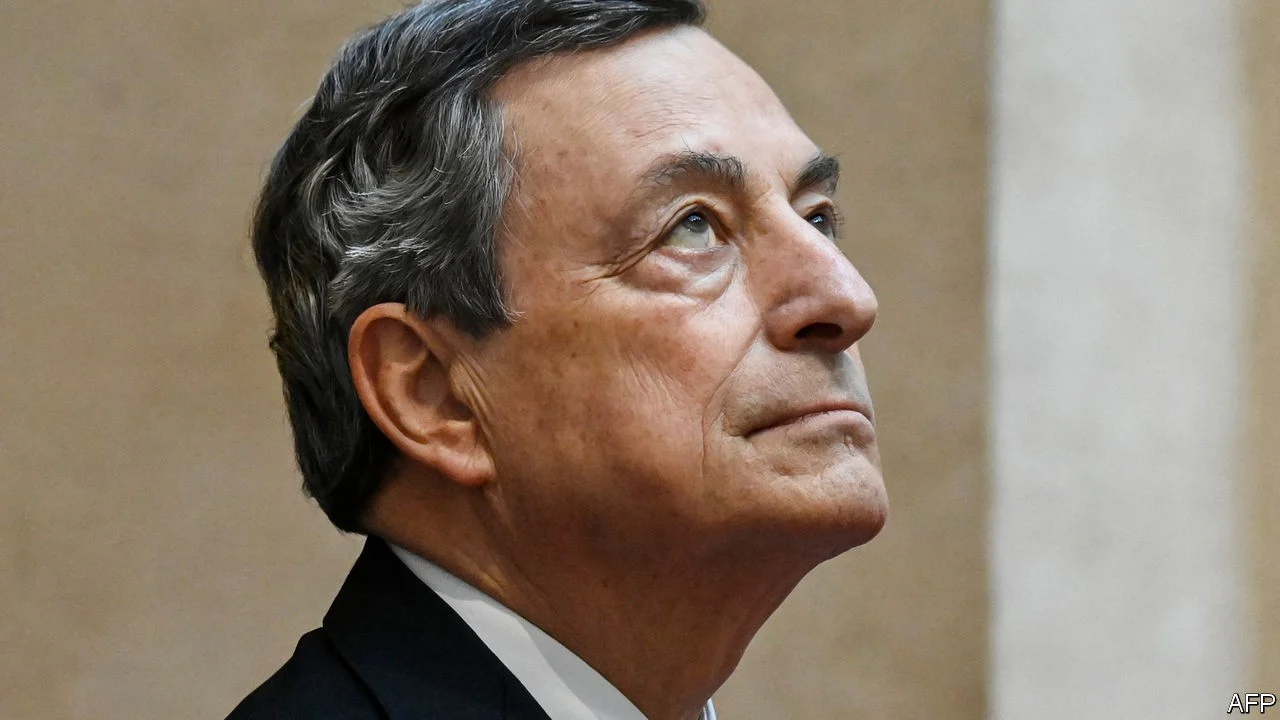SELDOM HAS an election for the Italian presidency, a mostly ceremonial post, attracted as much interest as the one that begins on January 24th in Rome. An electoral college of 1,009 parliamentarians and regional delegates is charged with choosing the next head of state, and will hold daily ballots until the job is done.
One reason for interest is the ever-controversial Silvio Berlusconi. The former prime minister has been among those most conspicuously keen to become president. But on January 22nd he gave up his ambition. Close associates had earlier admitted Mr Berlusconi was unable to rally the backing he needed, despite support from the parties of the right.
A second reason for the interest is the possibility that the choice will now fall on Mario Draghi, the current prime minister. Mr Draghi has presided over nearly 12 months of unusual calm and unity in Italian politics (his coalition government includes all but one of the main parties). And rarely have Italy’s fellow eu members needed its politicians to stay united and calm as much as they do now. Italy stands to be the largest beneficiary of the eu’s pandemic recovery funds. More than €200bn ($227bn) of the €750bn total is on offer and the hope is that it can be spent in ways that boost Italy’s economic growth. For more than two decades, the country’s dismal performance has acted as a brake on the economic growth of the entire eu.
Mr Draghi’s government has made a good start on implementing the reforms and investments needed to absorb the cash productively. But his barely disguised hankering to quit the prime minister’s residence, the Chigi Palace, for the grander Quirinale puts it at risk. If he is elected, it will be hard to find a successor able to hold together the current, ideologically heterogeneous coalition. If he is not, his standing will be diminished, so it may be almost as difficult for him to continue to bring off the same trick.
Fears have been expressed that Mr Draghi’s elevation could prompt a snap election. Though not impossible, that looks unlikely. As a result of legislation passed in 2012, if the current parliament is dissolved before September 24th, its members will lose the pension rights they have accumulated since it was convened in 2018 and be compelled to kiss goodbye to around €50,000 apiece in contributions. So a more likely scenario is that a successor government to Mr Draghi’s would be formed, which will attempt to limp past the deadline before collapsing at some point not too far from the natural end of the parliamentary term, in March 2023.
The danger here is that a post-Draghi government would get little done. Assuming a replacement can be found, he or she is unlikely to enjoy anything like the support Mr Draghi currently basks in, not least because the political parties that currently back him will want to start to position themselves for the next election, pulling apart in their different directions. Yet the work of reform has much further to go, and if it stalls so too may the flow of funds from Brussels. The covid recovery funds are being disbursed in tranches, with future tranches dependent on continued implementation of the agreed programme.
Whether, in the meantime, Mr Draghi does in fact become head of state will depend on several variables. Italian presidential elections are notoriously unpredictable—rich in surreptitious deals and giddying reversals. The incumbent, Sergio Mattarella, was elected in 2015 with 665 votes on the fourth ballot after receiving just four in the previous one. And since voting is secret, party members often ignore their leaders’ instructions.
Covid-19 has created another layer of uncertainty. The rules require a two-thirds majority to win in the first three rounds and a simple majority thereafter. That is calculated not as a share of votes cast, but as a share of the total number of electors. Any absences will thus make it harder for anyone to win. More than 30 members of the electoral college have tested positive for covid in recent days. On January 21st the government rushed out a measure to allow them to leave isolation to vote, probably at a specially created drive-in polling station near parliament.
The biggest obstacle for Mr Draghi is the legacy of Mr Berlusconi’s bid. Mr Berlusconi cajoled his allies, Giorgia Meloni of the hard-right Brothers of Italy and Matteo Salvini of the populist Northern League, into publicly supporting him. Mr Berlusconi thus became the paladin of the right—and so Mr Draghi, by default, that of the left. That makes it harder for Mr Berlusconi’s allies to switch their allegiance to the prime minister now. Yet neither left nor right has a clear majority in an electoral college teeming with independents. Roberto D’Alimonte, who teaches political science at the Luiss university in Rome, gives the left a tiny edge, of 463 to 452, leaving fully 94 electors with no clear allegiance.
The League’s votes are especially crucial—all the more so since some in the centre-left Democratic Party and many in the broadly progressive Five Star Movement have reservations about the prime minister becoming president. Yet Mr Salvini, like Mr Berlusconi, has publicly argued that Mr Draghi should stay in government. To support his elevation to the presidency now will require a u-turn the League’s leader may find hard to justify. Unless the incumbent, Sergio Matterella, were himself to do a u-turn and agree to stay on till the next election, it is hard to see how this vote can end well for Italy.
By The Economist





